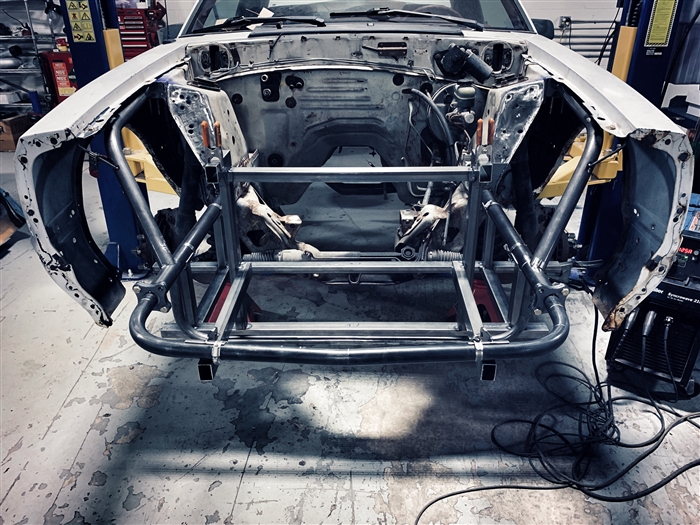

A new power-assisted rack-and-pinion replaced the recirculating-ball steering system for the 1981 turbo, becoming available on the naturally aspirated models the following year.


Neither came in for much appreciation in period road tests. Steering was changed: The 280ZX initially offered either unassisted rack-and-pinion steering or a Datsun 810-derived recirculating-ball with power assistance. Overall, the new body design gave better fuel economy and high-speed stability (one of the known issues from the first generation Z-car). The rear of the car was stretched to accommodate a larger 80 L (21.133 US liquid gallons) fuel tank. The new design had a lower center-of-gravity and nearly 50/50 weight distribution in both the two-seater and 2+2 designs. By closing in the open grille of the first generation Z-car and through other improvements taken from wind-tunnel testing, the drag coefficient was reduced from 0.467 to 0.385, and the lift coefficient from 0.41 to 0.14. The 280ZX's body was redesigned with aerodynamics in mind. The wheelbase was up from its predecessor (90.7 in or 2,304 mm) to 91.3 in (2,319 mm) for the two-seater. The 280ZX adopted suspension similar to that of the concurrent Bluebird 910, with MacPherson struts in front and semi-trailing arm independent suspension in the rear. The car became a grand tourer rather than a sports car, particularly in the plush Grand Luxury versions. Most of the design effort went into the entirely different and much more modern interior. Many parts, including the rear-axle and the power steering came from the Datsun 810 luxury sedan. The exterior design was evolutionary, less rounded and with better integrated safety bumpers. In the spirit of the times, emissions controls and aerodynamics were markedly improved over the first generation Z-cars, while weight was down somewhat as long as the buyer did not pick much from the very long options list. Softer suspension, better sound insulation, more comfortable seats, and ample equipment including high-end audio systems defined the new ZX.
TEAM Z MOTOR PLATE WITH ADC DRIVER
Compared to the more overtly sporting earlier models, the 280ZX was a much softer, heavier car, with less focus on driving and more on driver comfort and refinement. Both two-seat and four-seat (2+2) designs were offered. The 280ZX was a complete redesign, retaining only the L28 inline-six engine and other driveline components from the 280Z.


 0 kommentar(er)
0 kommentar(er)
